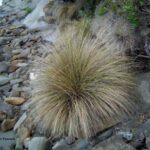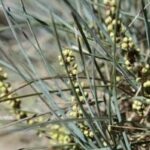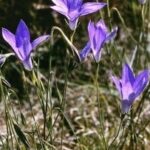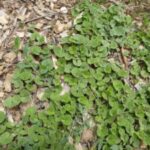Water Sensitive SA has developed A guide to raingarden plant selection and placement in SA in association with Shaun Kennedy, ecologist, SA Water, EPA Catchment to Coast Raingarden 500 program, and Adelaide and Mount Lofty Ranges Natural Resource Management Board.
Raingardens entered our urban landscape as a compact and flexible solution to stormwater quality treatment when the locality could not accommodate larger scale solutions such as constructed wetlands. These original systems were dominated by sedge plant species that we know to be effective at the removal of nitrogen.
As experience of our practitioner network has grown, we have come to realise a holistic approach to plant selection is essential. While a primary function of stormwater biofiltration raingardens is to improve stormwater quality, they should also enhance biodiversity and amenity values for our homes, streetscapes and parks.
- Tall bluebell
- Dichondra repens
Source: Atlas of Living Australia
Increased nutrient-removal capacity is made possible when there is diversity within the microbial community. As different plants support different species of bacteria, it is recommended that a broad range of plants effective at nitrogen removal make up 50% of your raingarden. The balance of the plant selection, referred to as “companion plants” can be selected to add amenity, biodiversity value and resilience to the system.
Positions of plants should reflect the type of purpose they serve in the system. Raingardens can be divided into zones to guide planting and media arrangement. The major zones within the system are show in the figure below.
The Guide to raingarden plant selection and placement provides a broad list of species for both nutrient removing and companion planting, suitable within each zone within a raingarden, and describes the plant form, maximum height and whether the species prefers the hills, coast or can accommodate a variety of environments.
Top tip – To reduce overall maintenance costs shift to more densely-stemmed plant species at the raingarden inlet to provide a physical barrier to the conveyance of litter and use spreading herbs to control weeds. Note: CRC for Water Sensitive Cities Adoption guidelines for stormwater biofiltration systems recommend a move away from the use of rock mulch as it restricts lateral growth of plants and creates a hot environment that inhibits plant establishment.










